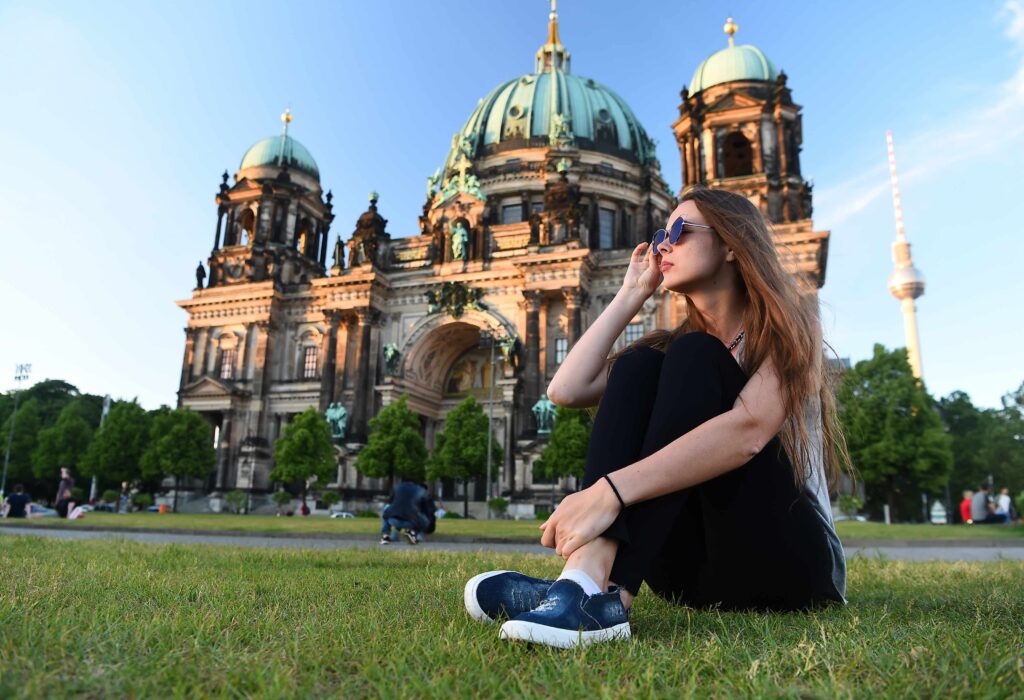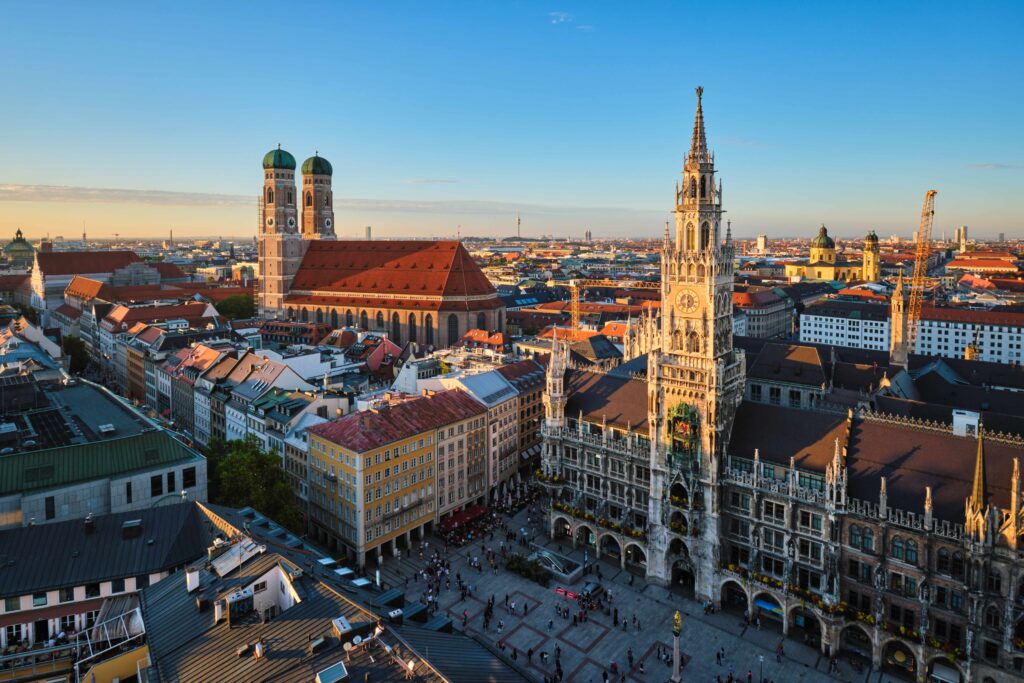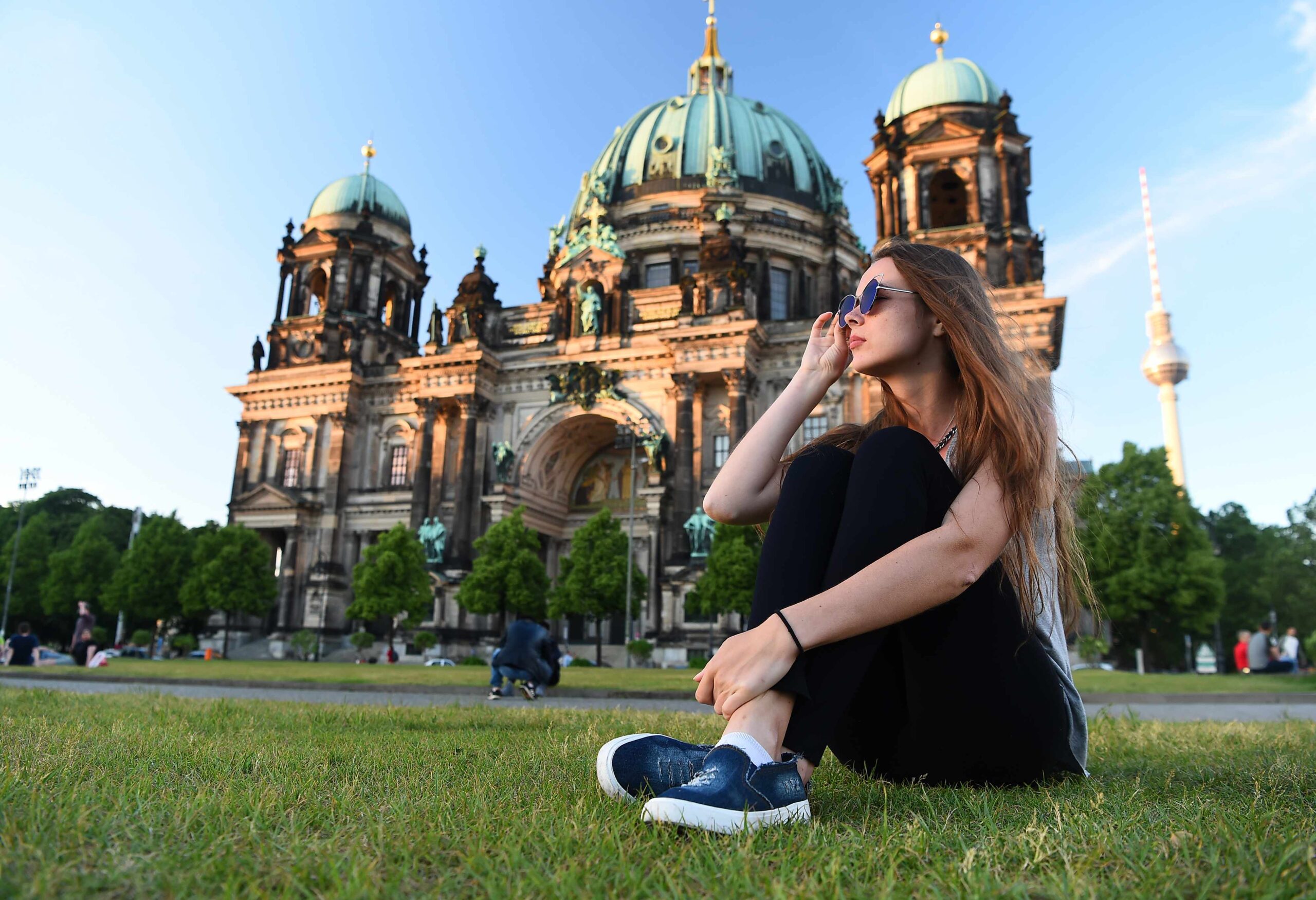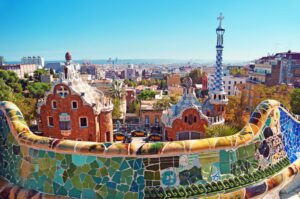I didn’t go to Germany expecting to be moved. I went because it was efficient, practical, “central”—a place I could hop through easily. But something strange happened between the echoing footsteps in Berlin’s empty memorials and the beer-sweet laughter that spilled into Munich’s air.
It wasn’t just another country. It was a collection of moments that cracked me open in ways I didn’t see coming. This itinerary isn’t just a list of stops—it’s the map of an emotional journey, and if you let it, it might just linger inside you too.
🧭 Germany Itinerary Route Overview
- Munich (4 days)
- Bavarian Day Trips (2 days)
- Berlin (4 days)
- Day Trips from Berlin (2 days)
- Rhine Valley & Heidelberg or Rothenburg (2 days)
This pacing—weaves peace and movement, discovery on your own terms. Ideally, plan for 10–14 days, which is perfect for experiences without turning into a blur
✨ Days 1–4: Munich — Where Tradition Wears Sneakers
I landed in Munich just after sunrise. The air felt like toast—warm, golden, slightly unfamiliar. I didn’t rush into sightseeing. I walked. Slowly. Through wide streets where locals cycled past in suits. Into beer gardens where it was totally normal to sip a radler at 10 a.m. And in that first morning, I remember feeling like… I could breathe.
You have to stop at 📍 Marienplatz when the bells chime. It’s cheesy, yes, but the way people look up together? There’s magic in shared pauses. I lost hours in the Englischer Garten, lying under leafy shade while watching surfers ride a man-made wave. And there was one moment—small, maybe forgettable—where I sat beside an old man on a bench. He offered me a piece of pretzel, said something I didn’t catch in Bavarian dialect, and smiled like we’d known each other for years. That’s the kind of thing you don’t plan for—but it stays.

☑ Travel Tip: If you’re short on time, grab a Bayern day pass—it gives you unlimited local train rides in Bavaria for a fraction of what you’d expect. Use it to hop over to Neuschwanstein Castle for a day. It’s as fairytale as promised, but get there early. The magic fades a bit under a crowd.
And if your heart craves something less polished? Choose Bamberg or Augsburg. I found stillness in their crooked alleyways, stories in their stone facades. These places don’t try to impress—they just are.
💥 Days 5–8: Berlin — Messy, Complicated, and Worth Every Second
Berlin was a punch to the gut—but the kind you’re grateful for later. This city doesn’t perform. It doesn’t charm you the way other European cities do. It confronts you, gently at first, then with full intensity.
I walked the length of the Berlin Wall on a drizzly afternoon, and it felt like history was pressing against my skin. I saw a woman cry softly near the Holocaust Memorial, and I didn’t ask why. I just stood nearby—silent solidarity between strangers. I felt heavy. But also alive.
Then, that night? I danced. In a smoky basement bar with locals who didn’t care where I was from. Just that I was there. That’s Berlin for you. Grief and joy and graffiti and techno—all smashed into one heartbeat.
☑ Essentials:
- Download DB Navigator and Google Translate, trust me.
- Carry cash—some places don’t take cards (yep, still true).
- Learn the U-Bahn and S-Bahn system. Once you get it, you’ll feel unstoppable.
And if you need a break from Berlin’s weight? Take a train to Potsdam. It’s this elegant little escape where palaces whisper and canals sparkle. I took a picnic there one day, and it was the first time in a week I heard birds louder than car horns.

🏰 Days 9–10: The Rhine Valley — Fairytales That Smell Like Wine
There’s a softness to the Rhine Valley I wasn’t expecting. I took the slow train along the river, past vineyards that seemed to glow in the late afternoon sun. It felt like a lullaby. No need to rush.
I stayed in Bacharach, and it felt like I’d stepped into a snow globe someone forgot to shake. In the evenings, I’d sip Riesling by the window and watch barges float past like slow-moving dreams. One afternoon, I got lost in Rüdesheim. It didn’t matter. A woman in an apron gave me directions and a slice of warm apple cake, laughing at my accent.
☑ Suggestion: Take a castle cruise on the Rhine—yes, it’s touristy, but so peaceful it doesn’t feel like it. The air smells like grapes and river wind. Your shoulders will drop. You’ll remember how to relax.

💶 Budget Breakdown (But With Soul, Not Just Numbers)
Let’s be honest—budgeting for travel doesn’t sound romantic. But the way money flows while you’re on the road? It tells a story, too. I learned that the hard way when I paid nearly €70 for a last-minute train to Berlin because I didn’t book ahead. Oof. Lesson learned.
You can absolutely experience the richness of Germany without burning through your savings—but you’ve got to know where to lean in and where to pull back. I stayed in cozy guesthouses and tiny family-run pensions that smelled like warm bread in the mornings and creaked in the best possible way at night.
I splurged on a castle-view river cruise one afternoon, then balanced it out with supermarket picnics that turned into the most unexpected feast under a maple tree near Heidelberg.
Here’s what I spent, more or less, and how you can pace it:
- Train Travel (Eurail or regional): €280–€350 if you’re smart about it. Eurail Global Pass is amazing if you’re city-hopping a lot. But if you’re staying in one region for a few days, the Bayern Ticket or Deutschland-Ticket will stretch your euros like magic. I rode from Munich to the Alps and back on one of those, and it cost less than my dinner that night.
- Accommodation: I averaged about €100 per night for charming, central stays. Some nights I spent less, others a bit more. The sweet spot? Book early, look for places that aren’t sleek but have personality—places that make you feel like someone’s grandma left the light on for you.
- Travel Insurance: €45–€60. Not the sexy part of travel, but when I caught a bad cold in Berlin, I was grateful. I didn’t need to panic. That’s worth a lot.
- Local Transport: €80–€120. Between metro passes in cities and spontaneous trams to nowhere in particular, it adds up. But it’s also part of the adventure. Some of my best people-watching happened on U-Bahn platforms.
- Food: €40–€60 a day, depending on how many wursts and schnitzels you’re in the mood for. I treated myself some days, and other nights I just grabbed a fresh roll, a block of cheese, and wandered.
- Tours & Attractions: €100–€150. Don’t overplan. Pick a few things you really want to experience—like the Pergamon Museum or a guided walk through Dachau—and give those your time and heart. Some of the best moments? Completely free. Walking. Watching. Listening.
☑ My Advice: Don’t count every euro. Count the stories. But do use regional passes to your advantage and book your long-haul trains early. That’s where the big savings live.

🎒 Essentials Before You Leave — Don’t Skip This Part
I’ve forgotten a toothbrush in five countries. It happens. But the stuff I’m about to list? You’ll miss it more than toothpaste if you leave it behind.
✅. Bring a local SIM card or eSIM if you don’t want to be glued to Wi-Fi zones. Trust me—it’s worth it just to be able to reroute yourself mid-train delay or find the nearest apotheke when your throat starts hurting. Speaking of which: pack basic meds. Germany’s pharmacies are efficient but closed on Sundays. I learned that one the hard way with a pounding headache and zero ibuprofen.
✅. Good walking shoes are non-negotiable. Germany is for wanderers. And not the pristine Instagram kind. The “accidentally walked 12 km today because I kept discovering things” kind. I wore mine into the ground by week two and bought a new pair in Hamburg. My feet thanked me. My suitcase did not.
✅. Don’t forget an EU plug adapter, a rainproof jacket, and if you’re anything like me—a small journal. I filled mine by Day 7. Not just with plans, but with overheard conversations, feelings I couldn’t name, flavors I didn’t want to forget.
And download these apps before you go:
- DB Navigator (for trains—it’s a lifesaver),
- Google Maps offline (don’t rely on signal in the middle of the Black Forest),
- and a translator app because even if most people speak English, making the effort feels respectful. And it opens doors you wouldn’t expect.
But most of all—bring your curiosity. Not everything needs a plan. Some things find you when you’re just a little lost, just a little open.
📆 The Best Time to Visit — When Germany Feels Alive
The seasons change the mood of Germany more than any country I’ve been to. I’ve seen her in spring, when the cherry blossoms bloom across cobbled paths in Heidelberg and locals sip white wine on park benches, still wrapped in scarves. I’ve felt her in autumn, when every forest trail near Füssen glows copper and smells like woodsmoke and wet leaves.

Late spring (May to early June) is my favorite—flowers everywhere, long golden evenings, and none of the peak-season crowds. You’ll get to feel the cities breathe again after winter. You’ll want to walk for hours and never stop.
September and early October? Stunning. The harvest vibes are strong, the beer festivals start popping, and there’s this cozy, glowing stillness that settles over villages by sunset. If you want to hike, this is your window.
Avoid mid-August if you can. Everyone’s on vacation. Trains are packed. Prices spike. And the heat? Unforgiving in cities with very little air conditioning.
December? Magical—but only if you’re ready for the cold. The Christmas markets are pure enchantment: warm glühwein, gingerbread scents, twinkling lights. But I lost feeling in my toes in Cologne and didn’t get it back until Frankfurt.
🍽 What to Eat — And Where You’ll Remember It
✅. Food isn’t just food when you travel. It’s a story, a memory you can taste. I still dream about that plate of Käsespätzle I had in a little tavern near Stuttgart. Cheesy, tangled, buttery bliss. I ate it slowly, watching locals nurse beers and chat like the night would never end.
✅. Currywurst? I know, I know. You’ll hear it’s overrated. But I swear to you—at midnight in Berlin, wrapped in a scarf, with the city buzzing and your feet aching—it hits like home. Messy. Perfect.
✅. Schnitzel in a candlelit biergarten. Brötchen in the morning, fresh from a bakery that smells like warm dreams. Apple strudel after a long walk by the river. You don’t need a Michelin star—you need a seat, a plate, and a little bit of hunger.
✅. And drink local. Whether it’s Riesling by the Rhine or a wheat beer in Bavaria, ask what’s local and say yes. One evening, I sat with a stranger in Bamberg, and he poured me a smoky beer that tasted like bonfire and history. We didn’t say much. We just sat there, sipping, watching the sky turn lavender. It was the best drink of my life.
Also Read This:
- My Unbeatable Ireland Itinerary 7 Days Road Trip Through the Emerald Isle
- Norway Itinerary: 7 Days of Wild Roads, Deep Silence, and A Sky That Never Ends
- My 1 Week Denmark Itinerary That Stayed With Me Forever
- Your Perfect Greece Itinerary 10 Days: A Journey Through Magic
- 10 Helpful Budget Tips for Traveling the United Kingdom (UK)
- How can you tour Iceland Ring Road on a tight budget?
- Where to Rent a Bike in Amsterdam With Gear Locals?
Final Words — Germany, You Were Never Just a Stop
Germany isn’t a checklist. It’s a slow conversation. Between past and present, city and soul. I didn’t expect to feel so much. But I did—on a bench in Munich, under a mural in Berlin, on a hill above the Rhine where everything was still.
So go. And don’t just take photos. Take moments. Take pauses. Take joy.
And let Germany surprise you.
❓FAQ — From One Curious Soul to Another
Q: Is 10 days really enough for Germany?
A: It’s enough to fall in love—but not enough to see it all. Pick 3–4 regions. Let yourself feel them instead of racing through them.
Q: Will I need to speak German?
A: No. But try. A “Guten Tag” or “Danke schön” goes a long way. People smiled more when I tried—even if I messed up.
Q: Should I book trains in advance?
A: Yes, especially the long ones. But for regional trains, get day passes. They’re cheap and easy to buy at the station.
Q: Is it solo-travel friendly?
A: Completely. I did half of this alone. Germany feels safe, orderly, and the locals are kind even when blunt.
Q: What surprised you most?
A: How emotional it was. I expected structure. I found soul.





